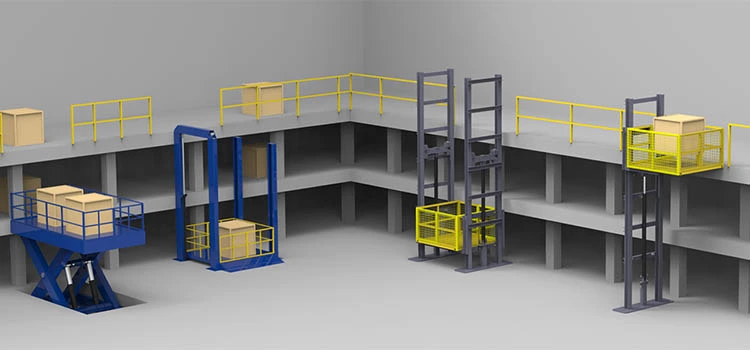Leading Lift Companies in London: Providing Exceptional Solution and Assistance
Leading Lift Companies in London: Providing Exceptional Solution and Assistance
Blog Article
Delving Into the Globe of Lifts: Usual Problems Faced by Different Lift Systems
As we browse through the vertical transportation systems of modern-day structures, lifts stand out as an important part of our day-to-day lives. From hydraulic lifts to grip systems and machine-room-less layouts, each lift kind comes with its set of usual issues.
Hydraulic Lifts
Hydraulic lifts, often liked for low-rise structures, make use of fluid stress to regulate the activity of the lift cars and truck (lift repair companies). This device includes a hydraulic pump pushing oil right into a cylinder, causing the lift to move in the preferred instructions. While hydraulic lifts are understood for their quiet and smooth procedure, they do feature their own set of typical concerns
One widespread issue with hydraulic elevators is oil leakage. The seals in the hydraulic system can break over time, bring about oil seepage. This not just develops a mess yet can likewise affect the elevator's efficiency if left unaddressed. In addition, problems with the control system, such as defective valves or a malfunctioning pump, can trigger interruptions in the elevator's movement.
Normal maintenance and prompt fixings are important to guarantee the smooth performance of hydraulic elevators. By addressing these common concerns proactively, building owners can reduce downtime and make certain the safety and effectiveness of their vertical transport system.
Grip Elevators
When thinking about vertical transportation systems in buildings, another usual type aside from hydraulic lifts is the grip lift. Traction elevators run making use of a system of ropes and weights that relocate the lift automobile by clutching onto the hoist ropes. This system enables smoother and much faster upright transport compared to hydraulic systems.
Among the common issues faced by grip elevators is rope wear. The continuous motion of the ropes within the grip system can bring about tear and put on in time, potentially causing the lift to malfunction or become dangerous for usage. Normal assessments and upkeep of the ropes are essential to guarantee the lift's appropriate performance and safety.
One more issue that traction lifts may run into is associated to the control system. Problems with the control system can cause issues such as erratic movement, hold-ups in response times, or perhaps complete shutdowns. Regular testing and maintenance of the control system are vital to avoid such concerns and ensure the lift's reliability.
Machine-Room-Less (MRL) Elevators

Among the key components of MRL lifts is the small gearless traction maker that is mounted within the hoistway. This machine successfully drives the lift automobile without the demand for bulky equipment discovered in standard grip elevators. In addition, MRL lifts generally utilize a counterweight system to balance the cars and truck, further boosting their energy efficiency.
Despite their advantages, MRL elevators may encounter challenges connected to maintenance and repair service as a result of the constrained room for tools click site installation. Access for servicing components within the shaft can be limited, requiring specialized training for technicians. Correct maintenance schedules and normal assessments are critical to guarantee the ongoing smooth operation of MRL lifts.
Overloading and Weight Limitation Issues
Are lifts furnished to manage excess weight loads effectively and securely? Overloading and weight restriction concerns are important worries in lift procedures. Elevator producers layout raises with certain weight abilities to make certain guest safety and security and equipment durability. Surpassing these weight restrictions can lead to various issues, including mechanical failures, hold-ups, and safety threats.
When lifts are overloaded, it places too much pressure on the motor, wires, and other components, potentially causing malfunctions or breakdowns. If they discover excess weight, security systems such as sensing units and overload sensing units are in location to protect against elevators from moving. Furthermore, going beyond weight restrictions can bring about enhanced power usage and wear and tear on the lift system.
To minimize overloading issues, developing managers must prominently present weight limits in elevators and educate passengers on the significance of sticking to these restrictions - lift repair companies. Routine maintenance checks by certified professionals can also help make certain that elevators are running within secure weight parameters. By dealing with overloading and weight limit problems proactively, building proprietors can enhance elevator security and effectiveness
Electric System Failures
Exceeding weight limits in elevators can not just lead to mechanical issues but additionally potentially add to electric system failures within the lift infrastructure. Electric system failings are an essential worry in elevator procedure, as they can create unanticipated shutdowns, breakdowns, or even security dangers.
In addition, power rises or fluctuations in the electric supply can additionally interrupt the elevator's procedure, impacting its efficiency and security. These electric disturbances can harm delicate lift parts such as control panels, circuit card, or sensors, bring about system failures. Normal maintenance and inspections are important to determine and deal with potential electrical issues without delay, ensuring the efficient and safe operation of elevator systems. By sticking to weight limitations and carrying out routine electrical system checks, structure proprietors can mitigate the danger of electrical failings in lifts.
Conclusion

Hydraulic elevators, usually liked for low-rise structures, utilize fluid pressure to regulate the activity of the lift vehicle.When thinking about upright transportation systems in buildings, another common kind aside from hydraulic lifts is the traction lift. Traction lifts run utilizing a system of ropes and weights that move the elevator auto by clutching onto the hoist ropes. Unlike traditional elevators that call for a separate machine space to house the devices, MRL elevators incorporate many of the parts within the shaft, removing the demand for a dedicated device room.In verdict, elevators deal with usual problems such as hydraulic breakdowns, grip system failures, and electric system troubles.
Report this page